Television

For content primarily about and related to scripted television programming
What are you watching and what do you recommend? (Week of November 14, 2025)
- television
Comments are sorted by new by default. Feel free to describe what shows you've been watching and what you think of them. Feel free to ask for and give recommendations for what to watch to other users. All requests for recommendations are redirected to this thread, however you are free to create your own thread to recommend something to others or to discuss what you're currently watching. Use spoiler tags where appropriate. Copy and edit this text: >!Spoiler!< becomes Spoiler. Type inside the exclamation marks, with no extra spaces. submitted by /u/AutoModerator [link] [comments]
‘Twisted Metal’ Renewed for Season 3 on Peacock
- television
submitted by /u/MarvelsGrantMan136 [link] [comments]

'Reacher' Season 4 Wraps Filming
- television
submitted by /u/MarvelsGrantMan136 [link] [comments]

‘Little House on the Prairie’ Star Melissa Gilbert Says ‘I’m Nauseated’ Over Kissing Older Male Co-Star at 15 in Reaction to Megyn Kelly’s Epstein Comments
- television
submitted by /u/wadbyjw [link] [comments]

‘Pluribus’ Boss Gordon Smith Addresses Anti-AI Subtext, Says It’s “Less Rich” to Spell Things Out
- television
submitted by /u/wadbyjw [link] [comments]
‘The Earliest Show’: Ben Schwartz & Lauren Lapkus Reprise Roles In Cult Comedy For Amplify Pictures & Funny Or Die TV Series
- television
submitted by /u/wadbyjw [link] [comments]

Epstein Emails Reveal "Bubba" Bombshell About Trump & Republicans Pretend It’s NBD | The Daily Show
- television
submitted by /u/TheRealOcsiban [link] [comments]

Remember when FOX put the Power Rangers episode where they get new zords and the X-Men season premier on prime time?
- television
submitted by /u/SlowMotionSprint [link] [comments]

‘Line Of Duty’ Renewed For Season 7 At BBC; Martin Compston, Vicky McClure and Adrian Dunbar Reprising Roles
- television
submitted by /u/SanderSo47 [link] [comments]

Peter Morgan’s ‘The Boys From Brazil’ TV Reimagination Officially A Go At Netflix With Jeremy Strong & Gillian Anderson Among Leads
- television
submitted by /u/bwermer [link] [comments]

'All Her Fault', 'Pluribus' Ratings Start Strong Per Luminate Rankings
- television
submitted by /u/Top_Report_4895 [link] [comments]

Not Sure That This is Well Known, but Landman is Literally Oil Industry Propaganda Paid For by an Organization Created by a Partnership Amongst Nearly Every Oil/Gas Producer
- television
This video covers the nature of the propaganda very well. For additional proof, here is the American Petroleum Institute very proudly announcing the show's return and its usefulness as a paid outlet for their propaganda: https://www.api.org/news-policy-and-issues/news/2025/11/17/as-landman-returns-api-campaign-spotlights-workforce-powering-americas-energy-fu This is why those scenes where he waxes poetic about the "realities" of energy production seem so out of the blue and ham fisted. submitted by /u/atv-nh [link] [comments]

Tomb Raider: The Legend of Lara Croft | Season 2 Official Trailer
- television
submitted by /u/Task_Force-191 [link] [comments]

‘Black Doves’: Neve Campbell, Sam Riley & Ambika Mod Among Cast Added For Season 2 Of Netflix Spy Thriller
- television
submitted by /u/AdSpecialist6598 [link] [comments]

What’s the most underrated television series that seems cool, but most people don’t know about it?
- television
submitted by /u/Substantial-Dare5462 [link] [comments]
Supernatural Leaves US Netflix December 17th
- television
End of an era. After its gone from netflix, nowhere else to really stream it. submitted by /u/Icycold157 [link] [comments]
What television show has the most viewing hours of all time?
- television
If you could guess, what show do you think has been watched the most? Reruns included. The Simpsons? Spongebob? Could it be Friends? Doctor Who? I've seen people suggest The Office before, but The Simpsons has been on for over 35 years and Spongebob for over 25. Are shows like Friends or The Office even that popular internationally? What are other show could it be? What television show have people spent the most time watching? submitted by /u/Jagueroisland [link] [comments]
Dexter: Resurrection Boss Finally Reveals Whether Don Framt, the New York Ripper, Appears in Season 2
- television
submitted by /u/JamStan1978 [link] [comments]

Jeffrey Epstein: Trump's A Bad Guy | "Bubba" Was Neither A Clinton Nor A Horse | Trump: I Don't Care | The Late Show with Stephen Colbert
- television
Newly-released emails show Jeffrey Epstein found Donald Trump to be the worst person he'd ever met, and the documents hint at a sexual exchange between Trump and someone named "Bubba." Faced with the prospect of Republican lawmakers voting to release the DOJ's files on Epstein, President Trump flipped his stance and posted "I don't care!" to social media. submitted by /u/ControlCAD [link] [comments]

ESPN acquisition of MLB.tv finalized, but not yet announced
- television
submitted by /u/Predictor92 [link] [comments]

Jon Stewart Asks Whether David Ellison and Other Moguls Get Artists
- television
submitted by /u/Top_Report_4895 [link] [comments]

Trump Attacks Greene and Massie Amid MAGA Civil War Over Epstein Scandal: A Closer Look | Late Night with Seth Meyers
- television
Seth takes a closer look at Trump lashing out at MAGA Republicans over their push to release the Epstein files and his sudden reversal on the upcoming House vote. submitted by /u/ControlCAD [link] [comments]

The Secret Diary of Adrian Mole' Coming To BBC From David Nicholls
- television
submitted by /u/abucalves [link] [comments]

Daredevil: Born Again Season 2 has total freedom: 'We can do whatever we want'
- television
submitted by /u/abucalves [link] [comments]

'SNL' reveals final 2025 hosts: Melissa McCarthy, Josh O'Connor & Ariana Grande
- television
submitted by /u/NoCulture3505 [link] [comments]

Stay up to date with the latest TV news, previews, spoilers, casting updates, interviews, and more from TVLine. Your go-to source for all things TV.
Twisted Metal Renewed For Season 3 At Peacock With New Showrunner
- Renewals
Twisted Metal isn't running out of gas anytime soon: Peacock has renewed the post-apocalyptic action comedy for Season 3.
Twisted Metal isn't running out of gas anytime soon: Peacock has renewed the post-apocalyptic action comedy for Season 3.

What The Cast Of Star Trek: The Next Generation Is Doing Today
- Drama
Two decades after the original series, Star Trek: The Next Generation introduced the franchise to a whole new audience. Here's how its main cast looks today.
Two decades after the original series, Star Trek: The Next Generation introduced the franchise to a whole new audience. Here's how its main cast looks today.
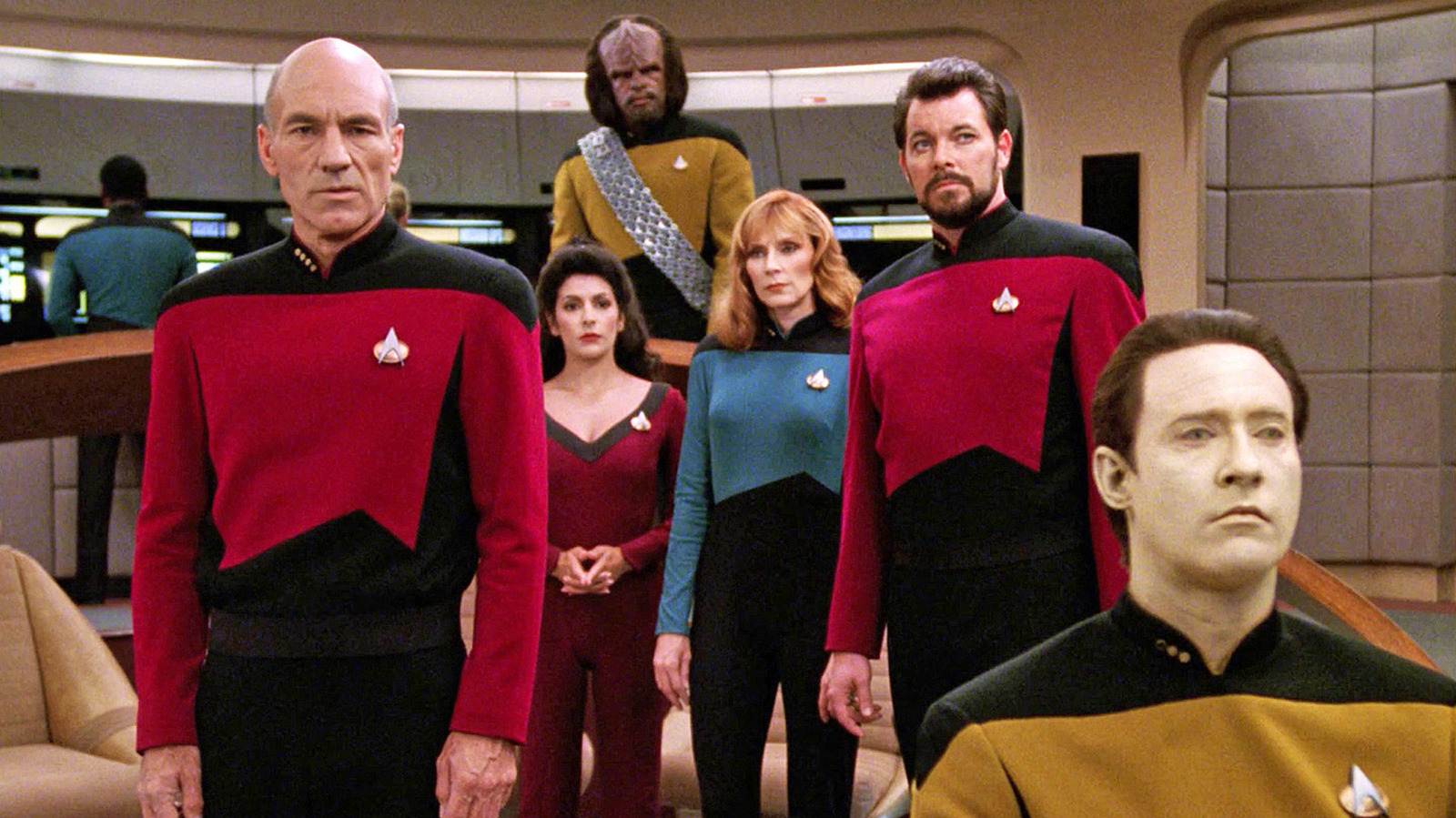
Save The Dates: Emmys On NBC, Neil Patrick Harris Game Show And More
- Television
- News
The 78th Primetime Emmy Awards have set a September 2026 airdate on NBC, plus more important TV dates to remember.
The 78th Primetime Emmy Awards have set a September 2026 airdate on NBC, plus more important TV dates to remember.

Stephen King Credited A David Lynch Classic For CBS Greenlighting His TV Series Golden Years
- Drama
According to Stephen King, the success of this David Lynch series was instrumental in CBS' choice to push forward with his early '90s sci-fi show Golden Years.
According to Stephen King, the success of this David Lynch series was instrumental in CBS' choice to push forward with his early '90s sci-fi show Golden Years.
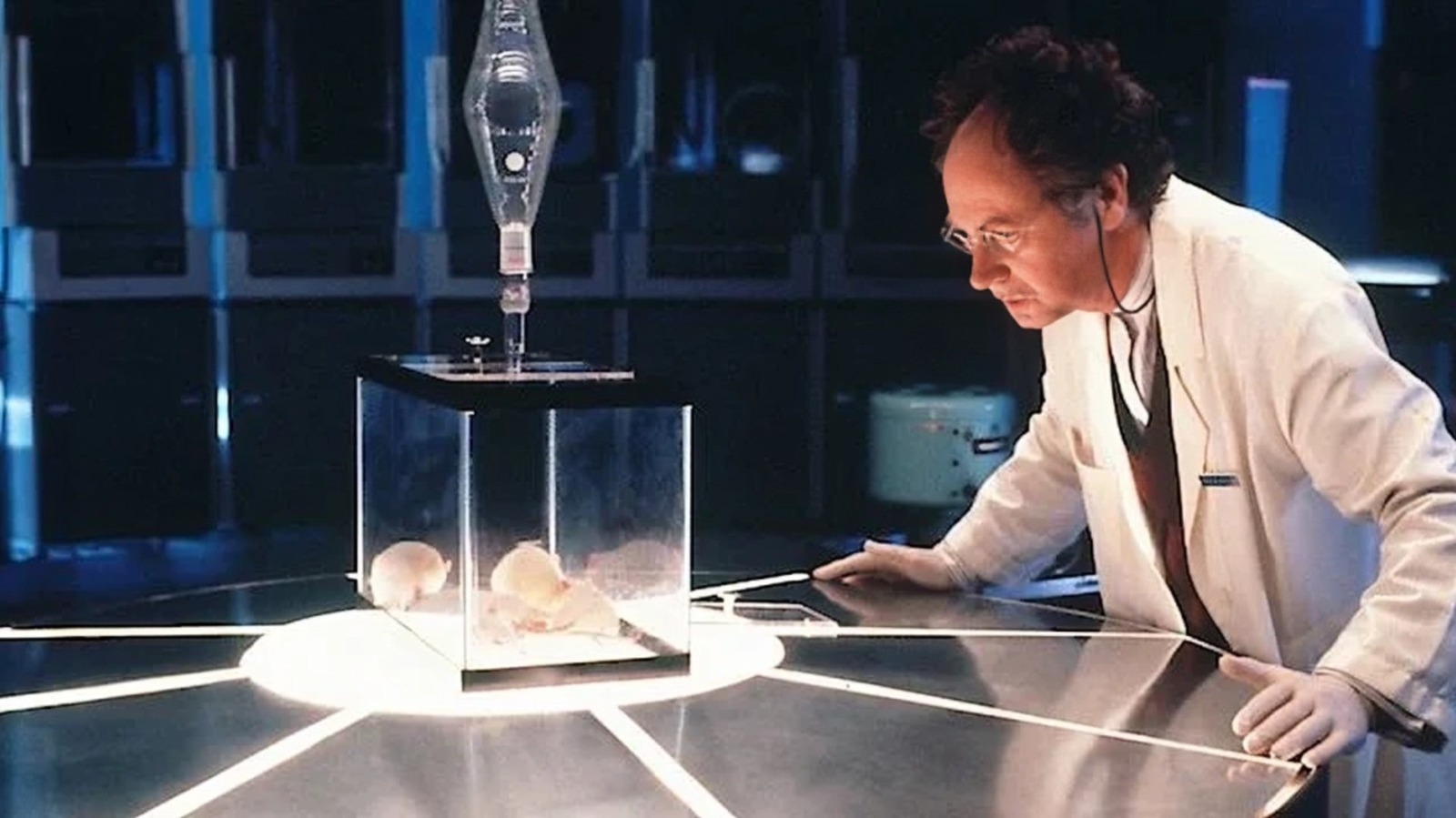
Ghosts Exclusive Sneak Peek: Ben Feldman's Kyle Returns At Thanksgiving To Do The Ghosts' Bidding (And Annoy Jay) — Watch
- Exclusives
- Sitcom
Ghosts' Jay isn't too happy to see Kyle back at Woodstone Mansion in our exclusive sneak peek.
Ghosts' Jay isn't too happy to see Kyle back at Woodstone Mansion in our exclusive sneak peek.

The 12 Best Animated Disney Shows Of All Time, Ranked
- Disney+
For anyone wanting to rewatch some Disney television classics, we've got you covered. Here's our ranking of the 12 greatest animated Disney shows of all time.
For anyone wanting to rewatch some Disney television classics, we've got you covered. Here's our ranking of the 12 greatest animated Disney shows of all time.
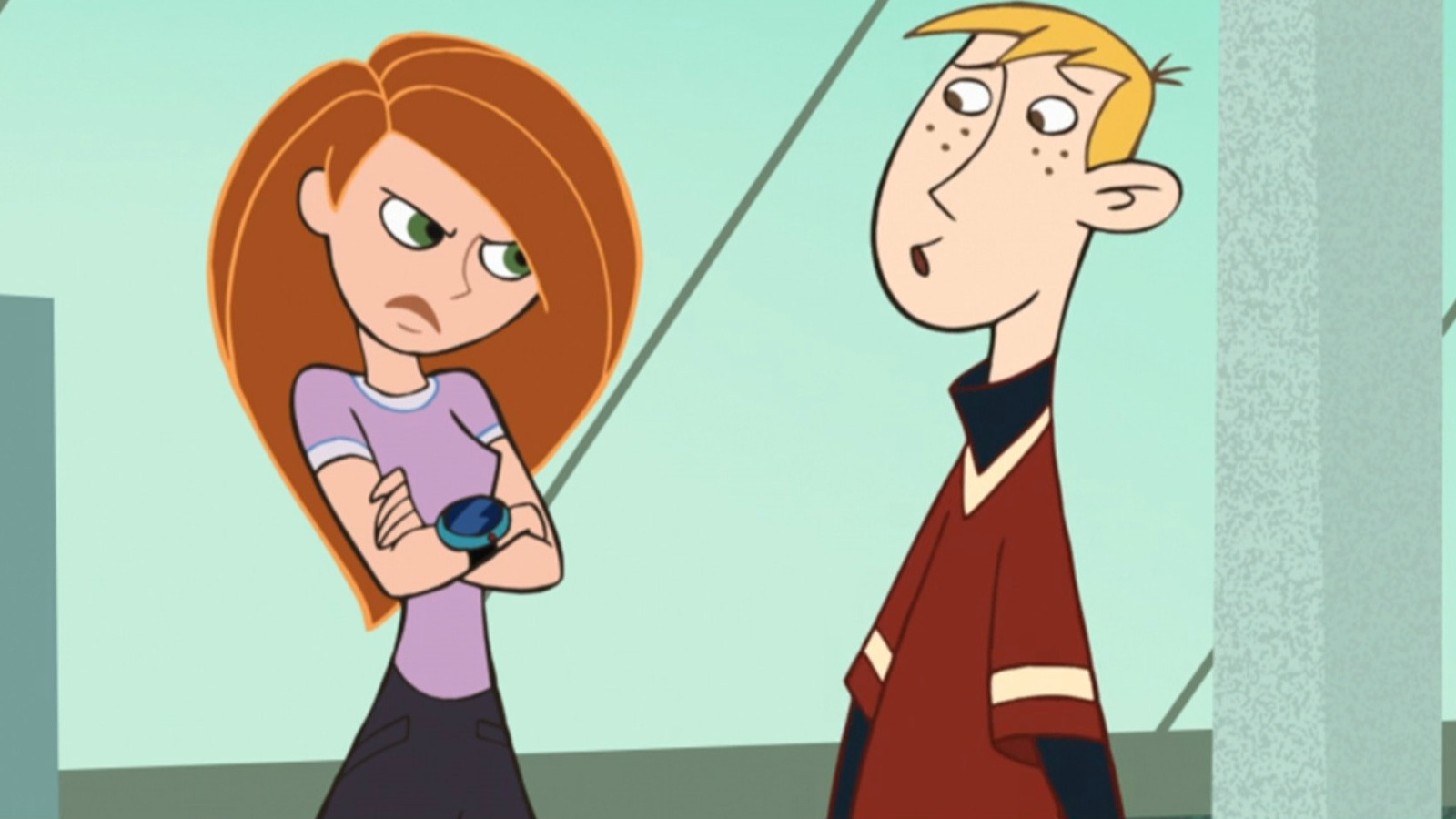
Avatar: The Last Airbender's Creatives Came Up With Two Character Designs Just Before Their Pitch Meeting
- Daytime TV
Before making their pitch to Nickelodeon, the creators of Avatar: The Last Airbender made sketches of two pivotal characters in their earliest form.
Before making their pitch to Nickelodeon, the creators of Avatar: The Last Airbender made sketches of two pivotal characters in their earliest form.
What To Watch Tuesday: Squid Game: The Challenge Winner Revealed, DWTS Semi-Finals And More
- What To Watch
On TV this Tuesday: Squid Game: The Challenge declares a winner, the Dancing With the Stars semi-finals get underway, and an NCIS agent gets kidnapped.
On TV this Tuesday: Squid Game: The Challenge declares a winner, the Dancing With the Stars semi-finals get underway, and an NCIS agent gets kidnapped.
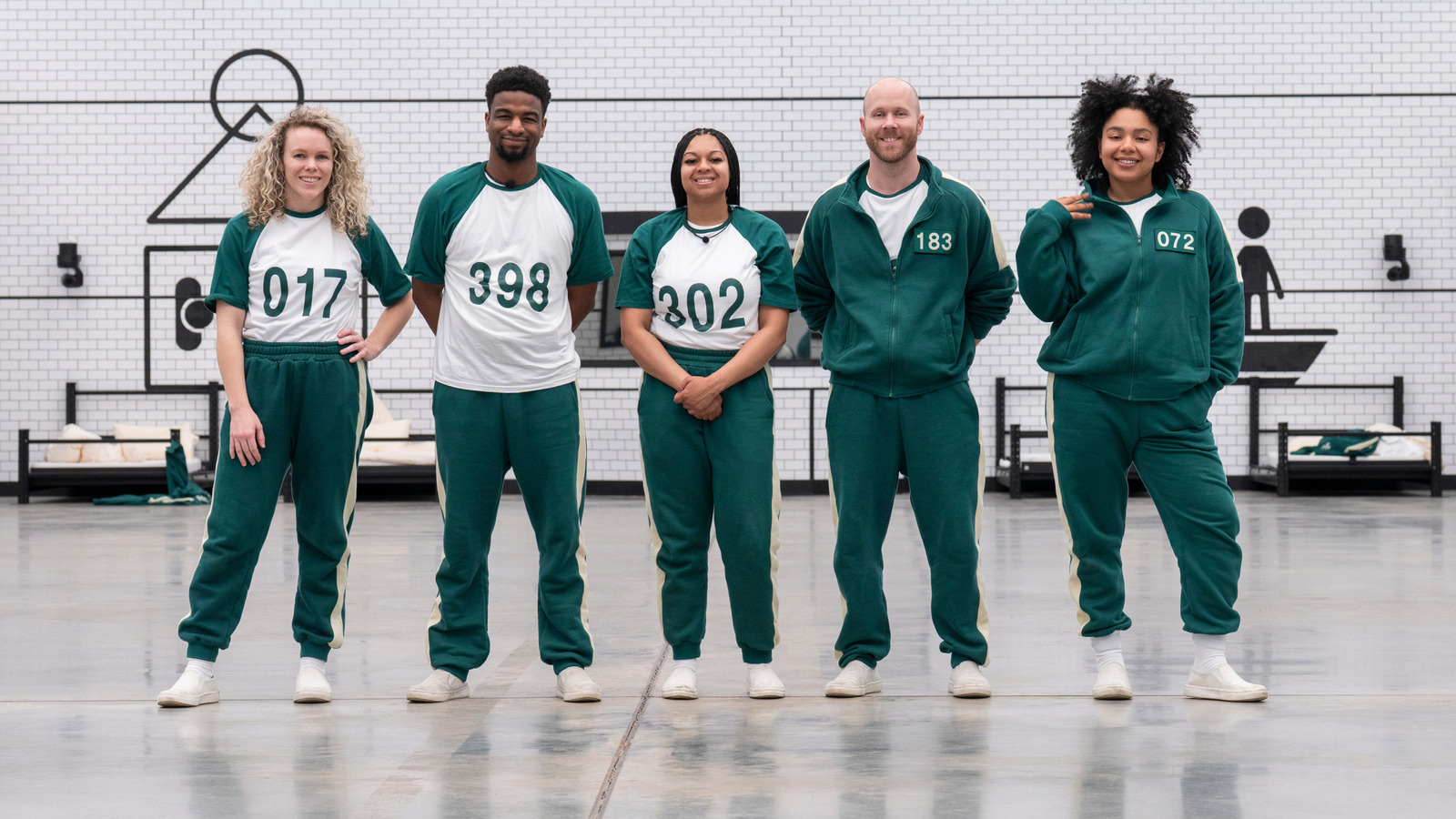
The Voice Knockouts: Niall Horan Loses His Favorite Contestant (Again!) In Part 4 — See Who Made It Through
- The Voice
- Recaps
Reba McEntire finally delivered her Mic Drop moment in Part 4 of The Voice's Season 28 Knockouts. See which of your favorites are headed to the playoffs.
Reba McEntire finally delivered her Mic Drop moment in Part 4 of The Voice's Season 28 Knockouts. See which of your favorites are headed to the playoffs.

The Simpsons EP Confirms Another Longtime Character Is 'Dead As A Doornail' After 35 Seasons (Exclusive)
- News
- Exclusives
- Primetime TV
A longtime Springfield resident was killed on Sunday's episode of The Simpsons. And unlike her previous brush with death, this one's going to stick.
A longtime Springfield resident was killed on Sunday's episode of The Simpsons. And unlike her previous brush with death, this one's going to stick.

10 Stars Who Had More Than One Iconic TV Show Role
- Television
It's hard enough for an actor to become legendary for just one TV role, but these individuals were able to do so for two characters on two separate shows.
It's hard enough for an actor to become legendary for just one TV role, but these individuals were able to do so for two characters on two separate shows.
Jimmy Kimmel Was Responsible For One Of Hacks' Best Jokes
- HBO Max
- Drama
- Sitcom
Jimmy Kimmel made a big impact in his cameo on HBO Max's Hacks, and as it turns out, he wrote one of the episode's -- and the series' -- best jokes ever.
Jimmy Kimmel made a big impact in his cameo on HBO Max's Hacks, and as it turns out, he wrote one of the episode's -- and the series' -- best jokes ever.
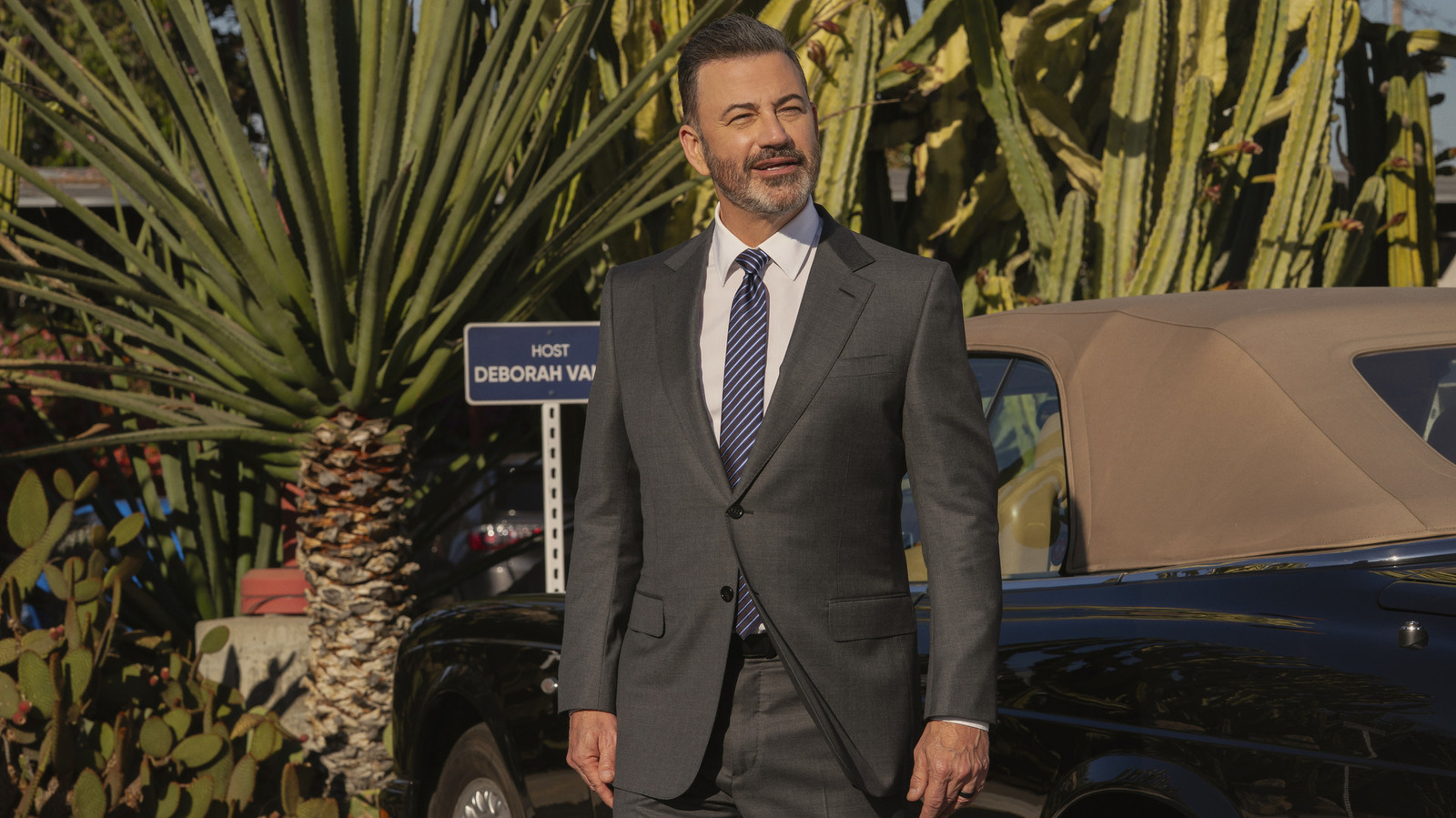
Casting News: The Hunting Wives Brings Back Three, Lucifer Vet Joins Presumed Innocent And More
- Netflix
- Casting News
The Hunting Wives are taking aim at a new season: See which stars are returning for Season 2 of the soapy Netflix hit.
The Hunting Wives are taking aim at a new season: See which stars are returning for Season 2 of the soapy Netflix hit.

12 TV Show Storylines That Were A Complete Waste Of Time
- Television
Here are 12 head-scratching storylines from popular TV shows - a waste of viewers' time when all was said and done.
Here are 12 head-scratching storylines from popular TV shows - a waste of viewers' time when all was said and done.

Landman's Billy Bob Thornton Reveals What Sam Elliott Said To Him After Some Tough Season 2 Scenes
- Paramount+
Landman star Billy Bob Thornton says he and Sam Elliott share a special connection when the cameras stop rolling -- Watch!
Landman star Billy Bob Thornton says he and Sam Elliott share a special connection when the cameras stop rolling -- Watch!
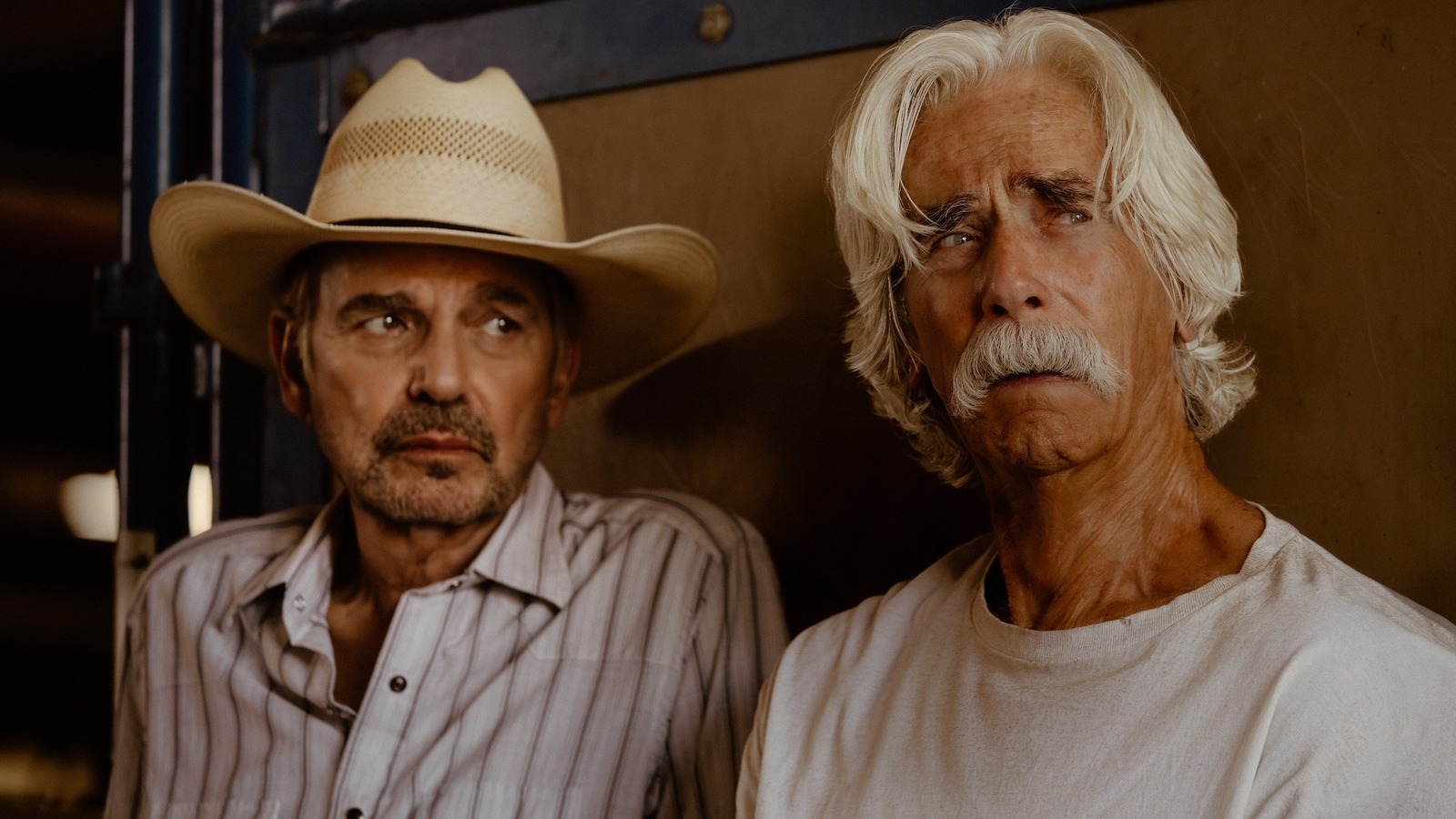
CBS Reveals Midseason Schedule: Yellowstone Spinoff Saddles Up, Survivor Turns 50 And More
- News
- Primetime TV
CBS has unveiled its midseason schedule, which includes the premieres of CIA, Survivor 50 and Y: Marshals - plus, new time slots for Tracker and Watson.
CBS has unveiled its midseason schedule, which includes the premieres of CIA, Survivor 50 and Y: Marshals - plus, new time slots for Tracker and Watson.

SEAL Team Reunion: Fire Country Casts Alona Tal As Max Thieriot's Potential Love Interest — Get Exclusive First Look
- Exclusives
- Casting News
Fire Country is delivering a SEAL Team reunion - will on-screen sparks fly between Thieriot and Tal?
Fire Country is delivering a SEAL Team reunion - will on-screen sparks fly between Thieriot and Tal?

Why Liam Hemsworth Agreed To Replace Henry Cavill As The Witcher's Geralt
- Television
- Netflix
Here's why Liam Hemsworth decided to step into the role of Geralt of Rivia on The Witcher following Henry Cavill's exit after three seasons in the role.
Here's why Liam Hemsworth decided to step into the role of Geralt of Rivia on The Witcher following Henry Cavill's exit after three seasons in the role.

The 15 Best TV Shows Streaming On BritBox
- Television
- Streaming
Thanks to BritBox, viewers outside the U.K. can enjoy a wealth of British TV series on streaming. Let's look at the 15 best shows it has to offer.
Thanks to BritBox, viewers outside the U.K. can enjoy a wealth of British TV series on streaming. Let's look at the 15 best shows it has to offer.

A Breaking Bad Actor Almost Played The Office's Michael Scott
- Sitcom
Before The Office went with Steve Carell as Michael Scott, this future Breaking Bad mainstay came close to playing the clueless but lovable Dunder Mifflin boss.
Before The Office went with Steve Carell as Michael Scott, this future Breaking Bad mainstay came close to playing the clueless but lovable Dunder Mifflin boss.

NOVA is the most-watched prime time science series on American television, reaching an average of five million viewers weekly.
Producers of NOVA’s 'When Machines Prescribe' win 2025 AAAS Kavli Gold Award
The filmmakers behind When Machines Prescribe are recipients of the 2025 AAAS Kavli Science Journalism Gold Award in the Video Spot News/Feature Reporting category.

Particles of Thought: A New Video Podcast
A new video podcast from the producers of NOVA, hosted by Hakeem Oluseyi.

Critical Condition Outreach and Events

A Critical Moment for Public Media
Science is for everyone. The stories we tell are too.
New NOVA Resource Collection for Teachers!
This year, we are excited to announce the launch of the updated NOVA PBS LearningMedia collection — with over 1,000 resources from NOVA films, digital series, apps, and more!
NOVA Science Trivia Night Schedule
Every month NOVA hosts a science trivia night at the GBH Studio at the Boston Public Library!

How Do Wind Turbines Work?
How wind turbines convert wind power into clean, usable electricity.
How Do Hurricanes Form?
Warm ocean waters fuel some of the most violent storms on Earth.

Building Stuff: 7 NOVA Documentaries on Feats of Engineering
Dive into the stories of engineering accomplishments throughout history.
5 Fun Ideas to Discuss at Your Thanksgiving Table
For moments when you may need to change the subject.
Why the Sky Changes Colors at Sunset
What causes those beautiful reds, oranges, and pinks at sunset?
How Was the Great Pyramid Built?
Records show how the Egyptians built the Great Pyramid more than 4500 years ago.
Prepare for National Engineers Week with NOVA
Explore the Building Stuff outreach toolkit, youth engineering activities, and virtual field trips!

What Does 5G Really Mean?
The next generation of wireless communication technology is much more advanced, but it requires a lot of new infrastructure.
Removing CO2 from the Atmosphere: Where Does It Go?
To combat climate change, scientists are working to remove carbon dioxide from the atmosphere.
What Your Earwax Says About You
Earwax reveals more than you might realize, from ancestry to underlying medical conditions.

Why Do Dogs Eat Poop?
It’s surprisingly common for dogs to eat poop, a habit called coprophagia.
Is Fear Contagious?
How pheromones and emotional contagion can make fear spread through a group–for better or worse.
What Causes Addiction?
How addiction works in the brain, and why opioids are so dangerously addictive.
STAFF PICKS: Favorite NOVA Documentaries
Enjoy these NOVA staff favorites.
How to Protect Your Data Online
Practical tips for creating a strong password and keeping your data safe online.
Who was Ötzi the Iceman?
Meet Europe’s five-thousand-year-old murder victim.
How Old Is Earth?
How did our solar system form? And when did Earth come to be?
Who Were the Ancient Maya?
Ancient Maya had a rich history and complex culture that is only now being fully appreciated.
Sleepwalking: What Happens in the Brain?
Why sleepwalkers can paint, eat, or even drive when part of their brain is asleep.
How Earth Became a Water World
The ancient history of Earth’s deep blue sea.
9 NOVA Documentaries on Human Genius
Stories of brilliant innovations and inventions by the world’s greatest minds.
7 NOVA Documentaries on Iconic Landmarks
Learn how some of the great structures of the world—the Eiffel Tower, the Great Pyramids, and more—were built.

5 Little-Known Facts About the Eiffel Tower
The Eiffel Tower is an engineering icon that changed the face of the modern world.
NOVA Science Studio Alumni (2023-2024)
Meet the 2023 – 2024 NOVA Science Studio student-producers who covered a wide variety of big data science stories
NOVA Science Studio 2024 Student Videos
Introducing the 2024 NOVA Science Studio student producers who reported on local data-related impacts and solutions
Data Privacy Tips from Secrets in Your Data
Here are some tips and tricks pulled from Secrets in Your Data to help you stay safe online.

Secrets in Your Data Outreach Toolkit and Events
Use the Secrets in Your Data Outreach Toolkit to organize screenings and events in your community about personal data privacy and security online.

5 NOVA Documentaries for Earth Day
Celebrate Earth Day with NOVA films about animals, nature, and the wonders of our planet.
How This Stingray May Have Gotten Pregnant Without a Mate
No sex? No problem. At least not for Charlotte the stingray.
2024 Eclipse Resources and Events
Find everything you need for the April 8 total solar eclipse here, including eclipse glasses, event registration links, and educational resources.

The History of Earth in Five Epic Chapters
The evolution of planet Earth over 4.5 billion years.

NOVA Science Studio launches new cohort with big data themes

Why Is the Sky Blue?
The familiar sky we see today wasn’t always blue.
How iron-air batteries could fill gaps in renewable energy
Rust Belt cities could be the perfect place to develop this renewable energy solution.
NOVA Science Studio 2023-2024 Program Registration
Engage your students with science journalism about issues in their communities with the NOVA Science Studio program!

Visit Ancient Civilizations in These 9 NOVA Documentaries
From Petra to the Amazon to ancient China, NOVA has you covered.

8 wild nature documentaries to watch now on NOVA
Check out some of NOVA’s best nature documentaries available for streaming.

NOVA Science Studio Alumni (2022-2023)
Meet the 2022—2023 NOVA Science Studio student-producers who covered a wide variety of science stories including invasive species and sea level rise, as well as how farm to table restaurants may reduce carbon emissions.
NOVA Science Studio 2023 Student Videos
Introducing the 2023 NOVA Science Studio student producers who reported on local climate change impacts and solutions
How to create local climate change projects with your students
Three STEM educators share best practices for tackling climate change in the classroom through project-based learning.

4 major effects of climate change in America
Warming temperatures are causing extreme weather patterns across the country. But communities are pushing back with solutions old and new.

Why cities are so hot (and how we can fix it)
Even the Romans noticed that cities are engineered to be heat islands. But that means we can do something about it.

How Native American traditions control wildfires
As wildfires escalate in Western states, authorities are embracing once-outlawed burning practices.

Weathering the Future Outreach Toolkit
Use this toolkit to organize community screenings which educate the public, provide a space to discuss local impacts, and brainstorm community solutions.

8 Mind-Blowing Space Documentaries to Watch Now on NOVA
Check out some of NOVA’s best space documentaries available for streaming.

How do induction stoves work?
Here’s how a magnetic field can heat up your pans.

How NASA makes those spectacular space images
The James Webb Space Telescope only captures infrared light, but imaging developers can convert the invisible into something both beautiful and scientifically accurate.

Teaching Resources: Local climate change solutions
Bolster learning for middle and high school students about the myriad ways our weather is changing, how communities are being impacted, and innovative solutions.

When wild dolphins help humans fish, both benefit
A new study shows just what dolphins get out of cooperating with fishers in Brazil (besides lunch).

Why it's so hard to make salt water drinkable
Seawater might seem like an obvious solution to water scarcity, but it comes at a cost.

Ice Age cave paintings decoded by amateur researcher
Patterns of lines and dots associated with specific animal species in cave art may point to an early writing system.

Students tell local climate stories in NOVA filmmaking program
Students across the country are participating in NOVA's film production program to make videos about climate change solutions in their local communities.
NOVA’s most popular science documentaries of 2022
Explore the cosmos, delve into ancient history, and follow an extreme rescue with NOVA’s most-watched documentaries released in 2022.
The top science stories of 2022
NASA nudges an asteroid, weird things emerge from water, and scientists tackle a new epidemic.
2-million-year-old DNA reveals surprising Arctic ecosystem
The oldest DNA ever retrieved, preserved in sediments in northern Greenland, reveals that Arctic and temperate species once commingled in an ecosystem unlike anything that exists today.

Teaching resources: How ancient cultures shaped mathematics
From the ancient origins of zero to the paradox of motion, NOVA’s teaching resources immerse students in the wonder of math.

4 mind-bending math experiments that explain infinity
Can one infinity be bigger than another?
5 reasons why humans are going back to the Moon
Earth’s natural satellite could be a jumping-off point for future space exploration.

NASA’s Artemis I moon rocket finally launches
NASA’s massive SLS rocket and Orion spacecraft kick off a series of missions to put humans back on the Moon.

PHOTOS: Huge, ancient animals carved into Peru’s hills
These are just a few of the geoglyphs in southern Peru, known as the Nazca lines, thought to be at least 2,000 years old.

What to do with an invasive fish? Make leather
Venomous lionfish are taking over the Caribbean and the Mediterranean Sea, eating everything in their paths. One solution: handbags and belts.

How do psychedelics work? This brain region may explain their effects
The claustrum seems to act as a switchboard, telling different parts of the brain when to turn on and off. But what happens when the switchboard operator steps away?
NOVA Science Studio Alumni (2020—2021)
We are proud to introduce the 2020—2021 NOVA Science Studio student-producers who covered a wide variety of science stories including fast fashion and sneaker sustainability, as well as the effects of food insecurity and its outsized impact on youth.

How a select few people have been cured of HIV
Scientists have cured a handful of people of HIV by piggybacking on treatments they received for blood cancer. But does that bring a widespread cure any closer?

DART spacecraft slams into asteroid
The mission is a test to see if NASA could knock an Earth-bound asteroid off its path, should we ever need to.

Koalas have fingerprints almost identical to ours
Koalas are the only non-primates with fingerprints. How is that possible—and why?

Malaria is outsmarting blood tests. Can a breath test help?
A parasite that causes the most common form of malaria is evolving to be undetectable by current tests. Some scientists want to zero in on compounds in patients’ breath instead.

The ice cream that changed physics
Sixty years ago a teenager’s homemade ice cream raised a surprisingly complicated question: Can hot liquids freeze faster than cold ones?

How air fryers work, scientifically speaking
Here’s how hot air can “fry” food.

What happens when you season a cast iron pan
Here is how oil and heat can form a durable coating.

The world’s oldest tree has competition
Will a Patagonian cypress in Chile prove older than California’s most elderly bristlecone pine?

Why you can’t really overcook mushrooms
Mushrooms are remarkably forgiving. Here’s the science of why.

A new game teaches financial literacy and decision-making
How can you identify and overcome biases that hurt you financially? NOVA teamed up with Duke University’s Center for Advanced Hindsight to design the NOVA Financial Lab, a game that breaks down the behavioral science behind financial decision-making.
Dazzling first images from James Webb Space Telescope
Images of five targets include the deepest and sharpest infrared image of the distant universe to date.
The science of fireworks
And why it’s so hard to make blue ones.

How exercise may help prevent Alzheimer's
Exercise could be a powerful defense against Alzheimer’s disease. Three dementia researchers explain how it works.

6 stinking cool facts about dog noses
Dogs can sniff out disease and analyze new odors even as they exhale. But how?

Human tracks may be earliest evidence of people in North America
Footprints in New Mexico’s White Sands National Park challenge scientists’ timeline of when humans first came to North America.

Scientists capture first-ever image of our galaxy’s supermassive black hole
The Event Horizon Telescope team has captured the first image of Sagittarius A*, the black hole at the center of the Milky Way.

Daily life on the International Space Station: A Q&A with a space archaeologist
Archaeologists are working to understand how astronauts really use their space on the ISS—and help improve space habitats of the future.

Adapting national parks for wheelchair hiking
The trails through our public lands weren’t designed for wheelchairs, but new wheelchairs are designed for those trails. National Park Service accessibility specialist Quinn Brett wants parks to catch up with wheelchair technology, increasing access to American wilderness.

Why light pollution is a solvable environmental crisis
Excessive outdoor lighting is deadly to animals and takes a toll on human health and wellbeing, too. But when it comes to large-scale environmental problems, this one may be a relatively easy fix.

How African Indigenous knowledge helped shape modern medicine
In the 1700s, an enslaved man named Onesimus shared a novel way to stave off smallpox during the Boston epidemic. Here’s his little-told story, and how the Atlantic slave trade and Indigenous medicine influenced early modern science.
A day at a Florida manatee hospital
As Florida’s seagrass beds die off, manatees are starving. Can the seagrass–and the manatees–make a comeback?

Astronomers successfully predict an asteroid impact above Iceland
Two hours before asteroid 2022 EB5 entered Earth’s atmosphere, scientists knew exactly when and where the space rock would strike.

How magpies outwitted researchers in Australia
During a recent study, a group of magpies removed their GPS trackers, astounding their observers. But were the birds actually trying to help each other?

A major Atlantic current is at a critical transition point
New evidence suggests that the larger system the Gulf Stream is part of is approaching a tipping point that could cause dramatic shifts in global weather patterns.

Why Tonga’s volcanic eruption was so destructive
Explore these NOVA resources to better understand the volcanology behind Tonga’s massive undersea eruption in January.

Epstein-Barr infection found to increase risk of multiple sclerosis
The underlying cause of multiple sclerosis is not yet known, but Epstein-Barr virus is a possible culprit, Harvard researchers say.

Western monarch populations grew over 100-fold in 2021. Why?
The beloved butterflies had fallen to critical levels in recent years. Experts weigh in on what might be causing their remarkable return.

OSIRIS-REx is bringing back an asteroid sample. What now?
The debris NASA’s asteroid-touching spacecraft collected could help us learn about the origins of our solar system. But for that to happen, scientists have to protect it from just about everything.

NOVA's top 5 science stories of 2021
Scientific advancements helped humans push through both the pandemic and the atmosphere this year, and a long-awaited visit from some underground insects set the country abuzz.

NOVA's top science education stories of 2021
High school scientists dazzled us with their innovations—while new studies revealed insights about math mastery and how we can prepare young people for real-world challenges.
The James Webb Space Telescope team prepares for launch
Here’s what the largest—and most expensive—infrared space telescope will set its sights on.


Galleries from TV Guide
The Merry, Jolly, and Corny New Christmas Movies in 2025
- Amazon Prime Video
- Disney+
- Netflix
- Hulu
- Apple TV+
- Sort: Ascending
- Streaming
Get your holiday on with these films on Netflix, Prime Video, and more

The Best Reviewed TV Shows of 2025, According to Metacritic
- Sort: Ascending
- Streaming
- Cable
These shows haven't met a critic who didn't like 'em!

Squid Game: The Challenge Season 2 Exclusive: Here's How These Players Are Connected, From Twins to Married Couples
- Netflix
- Sort: Ascending
- Streaming
- Squid Game: The Challenge
- Squid Game
More than 40 of the 456 contestants entered the game with connections to each other

The Best Halloween Movies to Watch in 2025
- Starz
- Amazon Prime Video
- Disney+
- Netflix
- Peacock
- HBO Max
- Hulu
- Streaming
- Scream
- The Shining
- Hocus Pocus
- The Witch
- Hereditary
- Midsommar
- What We Do in the Shadows
- Fear Street: Part One - 1994
- His House
- Halloween
- Ghostbusters
- It Comes at Night
- The Black Phone
- The Rocky Horror Picture Show
- Friday the 13th
- A Nightmare on Elm Street
- Beetlejuice
- Get Out
- The Craft
- Barbarian
- Jennifer's Body
- It
- The Conjuring
Welcome to spooky season

New Halloween Movies to Watch in 2025
- Shudder
- Paramount+
- AMC
- Netflix
- HBO Max
- Hulu
- Sort: Ascending
- Streaming
Bring Her Back and The Substance are coming just in time

The New Shows of the 2025 Fall TV Season
- Sort: Ascending
- Streaming
- Cable
- Broadcast
Vince Gilligan, Jason Bateman, Claire Danes, and Jessica Capshaw return to our TVs this season

The 50 Best Survivor Players to Never Win
- CBS
- Sort: Ascending
- Broadcast
- Survivor
Though some came painfully close

The New and Returning Broadcast Shows of the Fall TV Season
- ABC
- Fox
- CBS
- CW
- NBC
- Sort: Ascending
- Broadcast
Settle in and get comfy; you have lots of TV to watch

The 30 Best X-Files Episodes, Ranked
- Fox
- Sort: Ascending
- Broadcast
- Streaming
- The X-Files
- David Duchovny
- Gillian Anderson
Get spooky
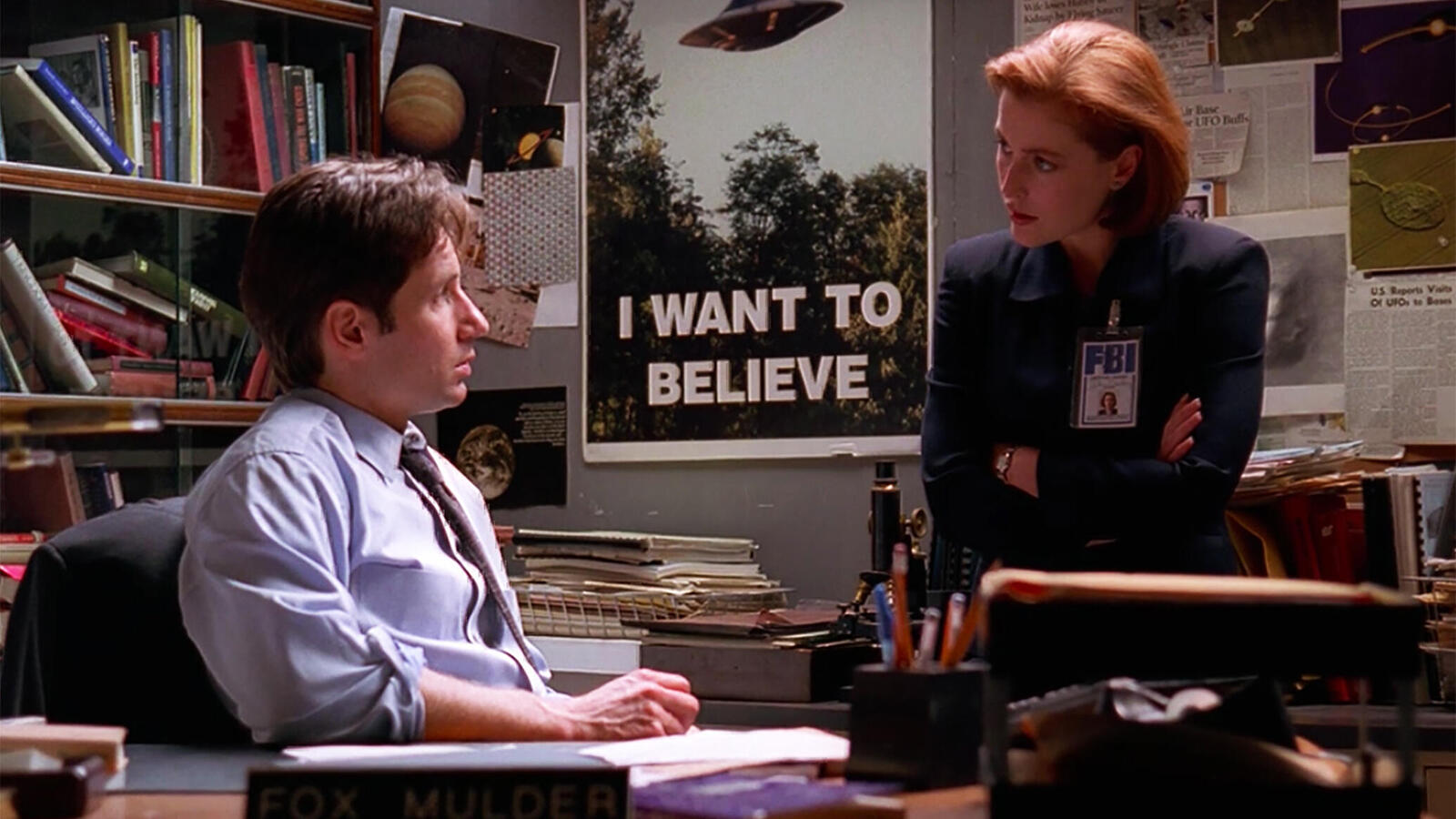
Landman Season 2 First Look Images
We've got 15 all-new images from Season 2 of Landman on Paramount+

Tulsa King Season 3 first look images
- Paramount+
- Streaming
Our first images from the upcoming season of Tulsa King

Dexter's Most Memorable Serial Killers
- Paramount+
- Showtime
- Sort: Ascending
- Streaming
- Cable
- Dexter: Resurrection
- Dexter: Original Sin
- Dexter: New Blood
- Dexter
Dexter Morgan has made enemies — and friends — with others who share his hobby

The Most Anticipated TV Shows of Fall 2025
- Fall TV
- Sort: Ascending
- Streaming
- Cable
- Wednesday
- Stranger Things
- The Paper
- Gen V
- Chad Powers
- Talamasca: The Secret Order
- Pluribus
- The Lowdown
- Alice in Borderland
- Task
- The Last Frontier
- The Girlfriend
- Down Cemetery Road
- The Morning Show
- IT: Welcome to Derry
- All Her Fault
- Palm Royale
- The Beast in Me
Fall for some good TV

What People Watched on Netflix This Year So Far
- Netflix
- Sort: Ascending
- Streaming
International programming is huge in 2025

The Most Heartbreaking TV Show Cancellations of 2025
- Sort: Ascending
- Streaming
- Cable
Let's all be sad about Doctor Odyssey together

The New Shows of the 2025 Summer TV Season
- Fox
- Bravo
- Amazon Prime Video
- Paramount+
- Netflix
- FX
- HBO Max
- Hulu
- Sort: Ascending
- Streaming
Hot seasons deserve hot new shows!

The 20 Coolest Anime Items You Could Have Bought at San Diego Comic-Con
- Anime
- Comic-Con
- Sort: Ascending
- Cable
- Streaming
Yes, you need a cool embroidered One Piece jean jacket

Bubble TV Shows: Which of Your Favorites Will Be Renewed or Canceled?
- Sort: Ascending
- Broadcast
- Doctor Odyssey
Doctor Odyssey, Brilliant Minds, Accused, and more still await their fate

The Most Anticipated Shows of Summer 2025
- Stick
- Ginny & Georgia
- The Buccaneers
- The Waterfront
- Ironheart
- The Bear
- Smoke
- Squid Game
- It's Always Sunny in Philadelphia
- Foundation
- The Summer I Turned Pretty
- Chief of War
- Peacemaker
- Long Story Short
- Wednesday
Summer is for TV lovers

Every Major Simpsons Character Who Has Died
- Fox
- Broadcast
- The Simpsons
R.I.P. four-fingered friends

Survivor 50: The 15 Biggest Cast Snubs
- CBS
- Spring TV
- Sort: Ascending
- Broadcast
- Survivor
These players deserved to return for Survivor's historic 50th season

The New Shows of the 2025 Spring TV Season
- Bravo
- Amazon Prime Video
- Paramount+
- Discovery
- Netflix
- HBO Max
- Hulu
- Apple TV+
- Sort: Ascending
- Streaming
- Cable
- Broadcast
Just what we all need: more new shows for our watch queues!

The Office Characters, Ranked By Who We Would Like To Work With
- Peacock
- NBC
- Sort: Ascending
- Broadcast
- Streaming
- The Office
Are we going to have to call HR?

The Most Anticipated Shows of Spring 2025
- Daredevil: Born Again
- With Love, Meghan
- Deli Boys
- Dark Winds
- The Righteous Gemstones
- Long Bright River
- The Wheel of Time
- Dope Thief
- Good American Family
- Happy Face
- The Residence
- Side Quest
- The Studio
- Dying for Sex
- The Handmaid's Tale
- The Last of Us
Spring into some new shows

Black Mirror Season 7 First Look Images
- Netflix
- Sort: Ascending
- Streaming
Time to board the USS Callister again

How to Stream All the 2025 Oscar Nominees at Home
- Amazon Prime Video
- Paramount+
- AMC
- Netflix
- Peacock
- HBO Max
- Hulu
- Sort: Ascending
- Streaming
- Movies
- A Complete Unknown
- The Brutalist
- Nosferatu
- Soundtrack to a Coup d'Etat
- Sugarcane
- Wallace & Gromit: Vengeance Most Fowl
- The Wild Robot
- The Six Triple Eight
- Sing Sing
- September 5
- The Seed of the Sacred Fig
- A Real Pain
- Porcelain War
- No Other Land
- Memoir of a Snail
- Maria
- Kingdom of the Planet of the Apes
- Wicked
- Emilia Pérez
- Dune: Part Two
- Anora
- The Substance
- The Apprentice
- Nickel Boys
- I'm Still Here
- Conclave
Where to watch Wicked, The Substance, Dune: Part Two, and more

20 TV Shows Turning 20 in 2025
- Sort: Ascending
- Cable
- Broadcast
- Streaming
- The Office
- Supernatural
- Criminal Minds
- It's Always Sunny in Philadelphia
- The Comeback
- The Closer
- Medium
- Ghost Whisperer
- Grey's Anatomy
- Weeds
- Prison Break
- Bones
- How I Met Your Mother
- My Name Is Earl
- Deal or No Deal
- American Dad!
- Anthony Bourdain: No Reservations
- Avatar: The Last Airbender
- The Suite Life of Zack & Cody
- So You Think You Can Dance
The Office opened its U.S. branch in 2005

The 25 Most Watched Netflix Shows in the Second Half of 2024, According to Netflix
- Netflix
- Sort: Ascending
- Streaming
No. 1 is not a surprise, but No. 2 might be!

The New Shows of the 2024-2025 Winter TV Season
- Amazon Prime Video
- Paramount+
- HBO
- Disney+
- Netflix
- FX
- HBO Max
- Hulu
- Sort: Ascending
- Streaming
- Cable
Get ready for new series from Robert De Niro, Harlan Coben, and the guy who created This Is Us!

Saturday Night Live: The Top 50 Cast Members of All Time, Ranked
- Peacock
- NBC
- Sort: Ascending
- Broadcast
- Streaming
- Saturday Night Live
Can you guess who No. 1 is?

More Shows Like American Primeval
- Netflix
- Sort: Ascending
- Streaming
- American Primeval
Circle the wagons and check out these rugged Westerns

23 TV Shows We're Excited to Watch in 2025
- Severance
- The Diplomat
- Yellowjackets
- Wednesday
- Zero Day
- Suits LA
- Daredevil: Born Again
- Andor
- The Last of Us
- The Bear
- The Handmaid's Tale
- Peacemaker
- Gangs of London
- Reacher
Some of television's biggest shows are returning

The Most Anticipated Shows of Winter 2024-2025
- Sort: Ascending
- Dexter: Original Sin
- Virgin River
- Squid Game
- Anne Rice's Mayfair Witches
- The Traitors
- Goosebumps
- XO, Kitty
- Severance
- Invincible
- Yellowjackets
- The White Lotus
What to watch while hiding out from the cold

Squid Game Season 2: Where Else to Watch the Stars of Netflix's Hit Drama
- Streaming
- Netflix
- Squid Game
- Lee Jung-jae
- Byung-hun Lee
- Yim Si-wan
- Park Sung-hoon
- The Glory
- Kang Ha-Neul
- Park Gyuyoung
- Sweet Home
From Queen of Tears to Mr. Sunhine

13 Shows Celebrating 25th Anniversaries in 2025
- Sort: Ascending
- Cable
- Broadcast
- Streaming
- Gilmore Girls
- Survivor
- Big Brother
- Malcolm in the Middle
- Jackass
- Queer as Folk
- CSI: Crime Scene Investigation
- Curb Your Enthusiasm
- Coupling
- Boston Public
The Gilmore girls are now ladies

The New and Jolly Christmas Movies Coming in 2024
- Sort: Ascending
- Streaming
- Cable
- Hot Frosty
- Our Little Secret
- Nugget Is Dead: A Christmas Story
- That Christmas
- Nutcrackers
Have some happy ho-ho-holidays with these new streaming films

The Most Disappointing TV Cancellations of 2024
- Sort: Ascending
- Streaming
- Cable
- Broadcast
- American Born Chinese
- Schmigadoon!
- Chucky
- Minx
- Arcane
- Dead Boy Detectives
- The Big Door Prize
- Outer Range
- Renegade Nell
- Time Bandits
- The Acolyte
- The Brothers Sun
- Scavengers Reign
- Our Flag Means Death
- 9-1-1: Lone Star
- The Boys
- Julia
- Tokyo Vice
- Evil
- My Lady Jane
- This Fool
- Girls5eva
- The Old Man
These shows could have gone on a little longer, if you ask us

House of David: First Look Photos
- Amazon Prime Video
- Sort: Ascending
- Streaming
- House of David
Yep, that Goliath is a huge dude!

Dexter: Original Sin: All the Dexter Easter Eggs and Callbacks From the Prequel's Premiere
- Paramount+
- Showtime
- Sort: Ascending
- Streaming
- Cable
- SHO: Dexter - Season 3 (101)
- Dexter: Original Sin
- Dexter: New Blood
- Dexter
Yes, Dexter Morgan is a cat person

Yellowstone Prequel 1923: Season 2 First Look Photos
- Paramount+
- Sort: Ascending
- Streaming
- 1923
The Duttons are roughin' it

The Best Holiday and Christmas TV Episodes
From Friends to The X-Files and everything inbetween

Netflix's Secret Codes That Will Help You Find What to Watch Fast
- Netflix
- Sort: Ascending
- Streaming
Liberate yourself from the algorithm and cheat the system

NCIS: The Biggest Cast Departures
- CBS
- Sort: Ascending
- Broadcast
- Streaming
- NCIS
From Mark Harmon to Cote De Pablo

The New Halloween Movies Streaming in 2024
- Amazon Prime Video
- Netflix
- HBO Max
- Hulu
- Sort: Ascending
You won't know what's coming

Hallmark's Christmas Movies in Photos
- Hallmark
- Sort: Ascending
- Cable
Rekindle that holiday spirit

New Fall Shows 2024
- ABC
- Fox
- CBS
- CW
- NBC
- Sort: Ascending
- English Teacher
These are your next favorite shows quite possibly maybe or maybe not

Only Murders in the Building Guest Stars
- Hulu
- Sort: Ascending
From Amy Ryan to Zach Galifianakis, here's who has stopped by the Arconia and beyond

7 Shows Like What We Do in the Shadows
- Netflix
- HBO Max
- Hulu
- Sort: Ascending
- Streaming
- What We Do in the Shadows
- Our Flag Means Death
- Wellington Paranormal
- Santa Clarita Diet
- Arrested Development
- Los Espookys
- Toast of London
These are worth spending your eternal life with

The Night Agent: First Look Season 2 Photos
- Netflix
- Sort: Ascending
Peter is in Thailand!

The 25 Most Watched Netflix Shows in the First Half of 2024, According to Netflix
- Netflix
- Sort: Ascending
No. 1 was a real shocker!


TV News, Previews, Spoilers and Reviews
Experience Tongits Star on GameZone: Your Online Card Game Adventure!
- Random Musings
Remember the excitement of playing Tongits with friends and family during festive gatherings? The laughter, the strategy, and the occasional bluff that made every game memorable? Now, thanks to GameZone, you can relive those moments anytime, anywhere, and even compete for real cash prizes! Introducing GameZone: Your Ultimate Tongits Star Destination GameZone has revolutionized the […]
The post Experience Tongits Star on GameZone: Your Online Card Game Adventure! first appeared on the TV addict.From Screen to Spin: TV-Inspired Casino Games That Bring Your Favorite Shows to Life
- Random Musings
The Perfect Crossover: TV Shows and Casino Games TV fans love a good storyline, engaging characters, and heart-pounding moments. But what if you could experience the thrill of your favorite shows beyond the screen? The entertainment industry has found a way to merge the love of television with the excitement of casino gaming, creating a […]
The post From Screen to Spin: TV-Inspired Casino Games That Bring Your Favorite Shows to Life first appeared on the TV addict.How to Stay Entertained and Connected Indoors This Winter
- Random Musings
As the temperatures drop and winter settles in, spending more time indoors becomes inevitable. While cosy nights by the fire are ideal at this time of year, the season can also leave us craving entertainment and connection. Whether you’re looking to beat cabin fever or discover new hobbies, winter offers plenty of opportunities to make […]
The post How to Stay Entertained and Connected Indoors This Winter first appeared on the TV addict.The Intersection of TV and Technology: How the Entertainment Industry is Changing
- Random Musings
As we find ourselves deep into the 21st century, one thing is for sure – the entertainment industry, particularly television, is undergoing massive transformations. Thanks to advancements in technology, TV shows are no longer just something to passively watch; they are interactive, immersive experiences. Let’s take a look at how technology is reshaping the way […]
The post The Intersection of TV and Technology: How the Entertainment Industry is Changing first appeared on the TV addict.How Else Could The Traitors Franchise Expand?
- Random Musings
The Traitors has been a global sensation, and there are now countless versions of the hit series. It began in the Netherlands as De Verraders in 2021, and the Canadian version first dropped in 2023. There’s so much hype around The Traitors now that it’s the perfect time to expand the franchise and cement its […]
The post How Else Could The Traitors Franchise Expand? first appeared on the TV addict.How to write an essay about a movie
- Random Musings
The Movie Essay is a good option for you to try your hand at film-study, idea-sharing, and analytical skills. Whether you’re writing for a class or personal reason, simplifying it can make the task more manageable and more fun. In this tutorial, you’ll understand how to compose an interesting and organised essay about a film. […]
The post How to write an essay about a movie first appeared on the TV addict.The Best TV-Inspired Video Games
- Random Musings
Whether it be through a massive and unexpected plot twist or an end-of-season cliffhanger that leaves watchers on the edge of their seats for months, television shows have always had a way of captivating us, sparking our imaginations and leaving us craving more. Once they’ve achieved this captivation, many TV shows turn to merchandise like […]
The post The Best TV-Inspired Video Games first appeared on the TV addict.Exploring Joel Kinnaman’s Versatility in Movies and TV
- Random Musings
Joel Kinnaman is a rising star in the entertainment world due to his captivating roles. He is most known for his portrayal of NASA astronaut Ed Baldwin in the 2019 Apple TV+ original series For All Mankind, which has captured viewers’ hearts. The Swedish-American actor, well-known for his ability to switch between various roles in […]
The post Exploring Joel Kinnaman’s Versatility in Movies and TV first appeared on the TV addict.Netflix Rush to Compete with Amazon By Launching Geek Week
- Random Musings
Netflix has been heavily investing in their new gaming platform for quite some time now. They have been promoting new titles while working on a set of exclusives. Interestingly enough, they have also announced their new Geeked Week festivities. The company has said that this is a collection of games that have been chosen by […]
The post Netflix Rush to Compete with Amazon By Launching Geek Week first appeared on the TV addict.Which Netflix Hits Will Put Gamers in a Spin?
- Random Musings
Source: Unsplash The entertainment world, in all its diverse glory, is actually smaller than you think. Creative minds think alike, which is why TV directors inspire their movie counterparts, and onscreen icons influence game creators. The crossover between TV shows, movies, and casino games is one of the most interesting. Spawned by the rise of […]
The post Which Netflix Hits Will Put Gamers in a Spin? first appeared on the TV addict.